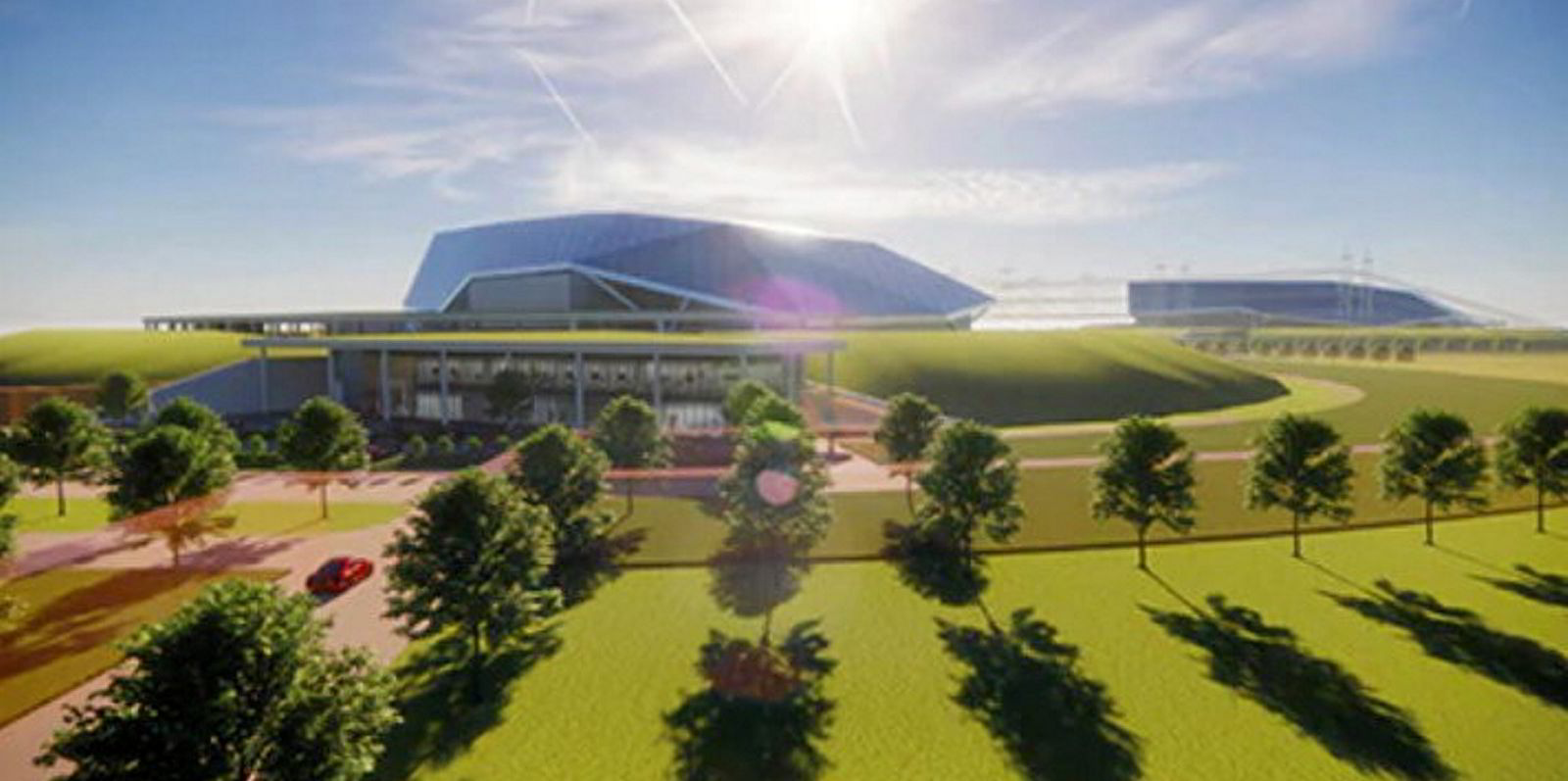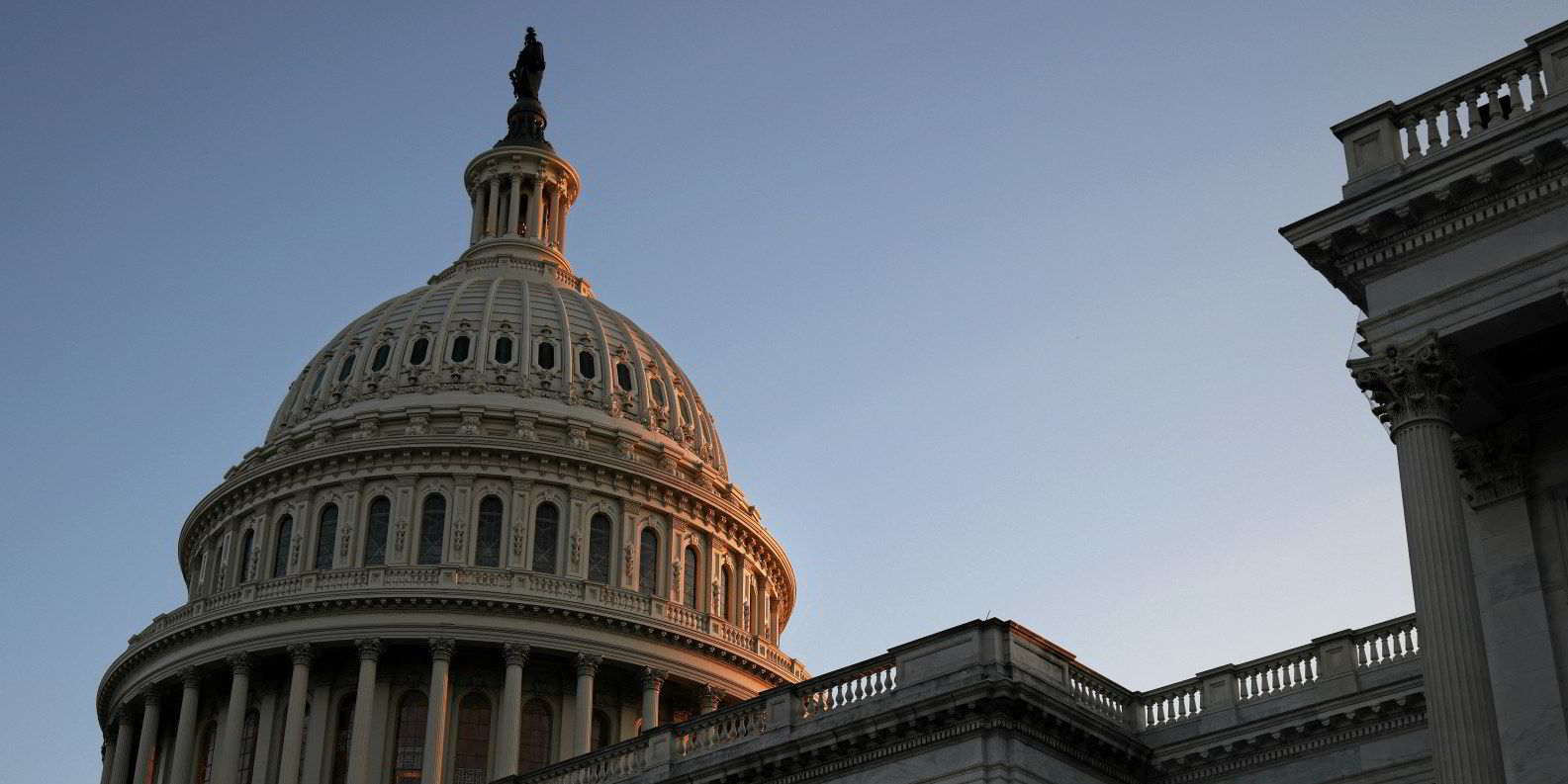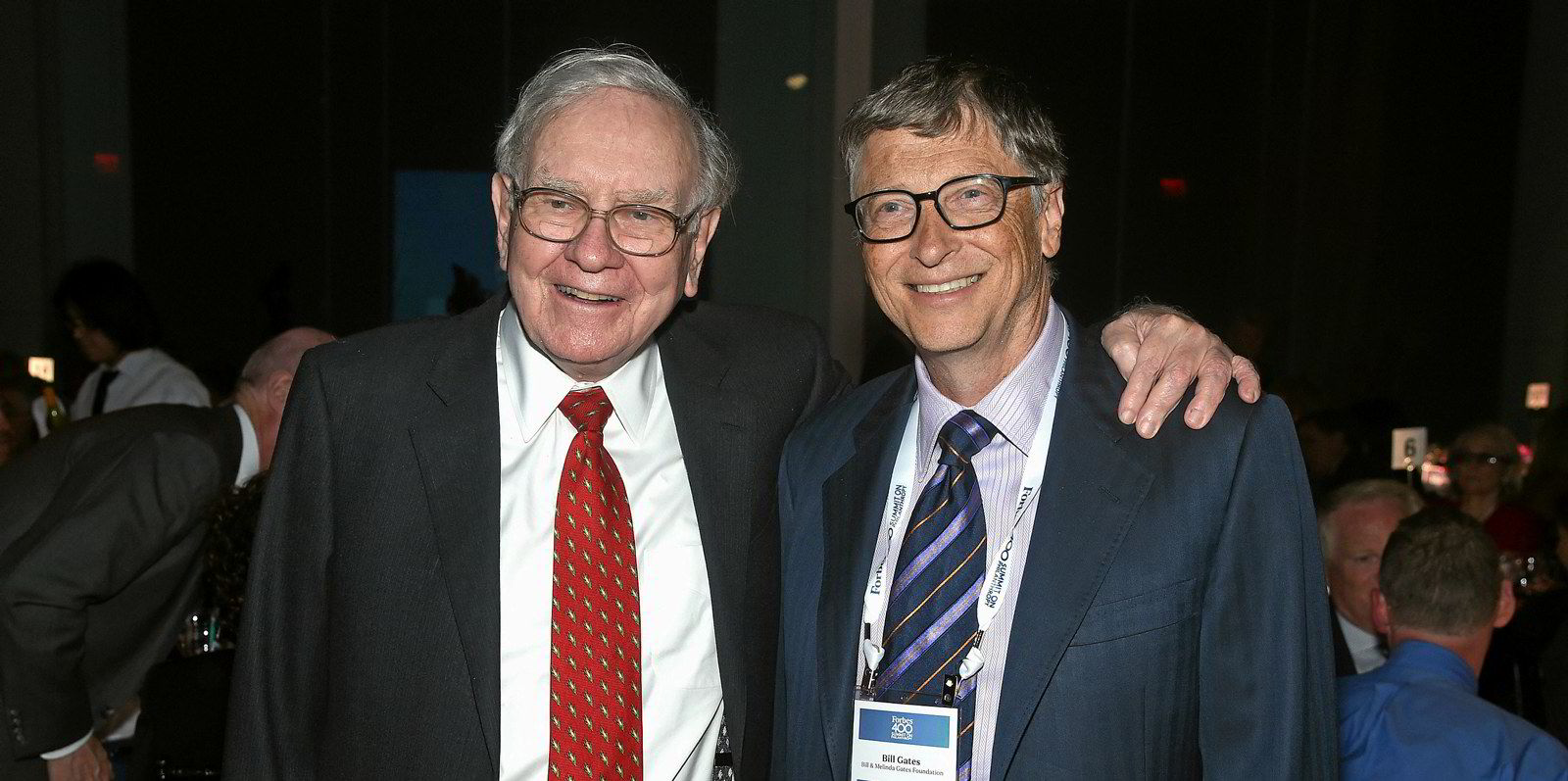The Rocky Mountain Institute issues a new report on reducing embodied carbon.
By Lloyd Alter
Published August 27, 2021
:max_bytes(150000):strip_icc():format(webp)/GettyImages-1149901729-e3ecbd5294f8493db105fb5d7a325db9.jpg)
Installing reinforcing bar for concrete construction.
Joe Raedle/Getty Images
The Rocky Mountain Institute (RMI) notes in a new report that "the solutions for addressing embodied carbon in buildings have not been widely studied in the United States, leaving a significant knowledge gap for engineers, architects, contractors, policymakers, and building owners." This is one of many understatements in the report, which is titled "Reducing Embodied Carbon in Buildings." Embodied carbon is pretty much ignored in North America; it is the blindspot of the building industry. This report may help change that.
"Embodied carbon" is the terrible name for the carbon emissions that I have described as "the CO2 emitted during the construction of a building, the carbon burp that comes from making the materials that go into a building, transporting them, and assembling them." A few years ago I suggested that they should be renamed "Upfront Carbon Emissions" because they are not embodied; they are in the atmosphere and they matter now when every gram of carbon counts against the carbon budget. The term has been accepted in the UK (where much of the work on Embodied Carbon is being done) and is used for all the emissions in the product stage and the construction process stage—everything up to the point where the building starts to be used.
Joe Raedle/Getty Images
The Rocky Mountain Institute (RMI) notes in a new report that "the solutions for addressing embodied carbon in buildings have not been widely studied in the United States, leaving a significant knowledge gap for engineers, architects, contractors, policymakers, and building owners." This is one of many understatements in the report, which is titled "Reducing Embodied Carbon in Buildings." Embodied carbon is pretty much ignored in North America; it is the blindspot of the building industry. This report may help change that.
"Embodied carbon" is the terrible name for the carbon emissions that I have described as "the CO2 emitted during the construction of a building, the carbon burp that comes from making the materials that go into a building, transporting them, and assembling them." A few years ago I suggested that they should be renamed "Upfront Carbon Emissions" because they are not embodied; they are in the atmosphere and they matter now when every gram of carbon counts against the carbon budget. The term has been accepted in the UK (where much of the work on Embodied Carbon is being done) and is used for all the emissions in the product stage and the construction process stage—everything up to the point where the building starts to be used.
:max_bytes(150000):strip_icc():format(webp)/RMI_EmbodiedCarbon_Exhibit1-ef4024129c1d4bf6a00102fd808dda60.jpg)
RMI
The report demonstrates that it is surprisingly straightforward and affordable to reduce the embodied carbon of concrete construction by optimizing the concrete mix and using recycled content in reinforcing bars. It actually claims that "concrete and steel offer most significant opportunities for reduction" and that we can "reduce embodied carbon by 24% to 46% at less than 1% cost premium."
The authors of the report—Matt Jungclaus, Rebecca Esau, Victor Olgyay, and Audrey Rempher—describe the issues with structural materials like cement, "one of the largest contributors to US-borne emissions at 68.3 million metric tons (MMT) ofCO2e per year," and steel, "responsible for 104.6 MMT ofCO2 emissions annually." They are not nearly so enthusiastic about mass timber as many others are, even questioning whether it truly stores carbon, writing:
"Considering wood as a carbon-sequestering material is a point of contention among industry experts, with debate largely revolving around varying forestry and harvesting practices and their effect on emissions. Nevertheless, timber is typically seen as a lower-carbon alternative to steel and concrete when used as a structural material."
That is kind of damning with faint praise there to those of us who think that concrete and steel should be replaced with sustainably harvested mass timber as soon as possible; but that's probably a bridge too far for RMI, even in a time of climate crisis. They make mass timber sound like a bad thing, instead of the only material that even has a chance of being carbon neutral. Mass timber is not perfect, but in a report that is trying to get the construction industry to understand embodied carbon, do they have to be so ambivalent about alternatives to concrete and steel?:
"As demand grows for wood products, it will be crucial to ensure this demand is met with sustainable forestry management practices. Otherwise, the broader use of timber as a building product could result in higher carbon emissions and less ecological diversity."
:max_bytes(150000):strip_icc():format(webp)/upfront-ebb5d49f27c14d5eb460d94b8980455e.jpg)
Upfront emissions, UK style.
World Green Building Council
RMI takes a different approach to Upfront Carbon Emissions than is typically done in the UK or Canada: "Upfront embodied carbon includes emissions related to the extraction, transportation (from extraction site to manufacturing site), and manufacture of materials." But it does not include "emissions related to transportation to the construction site, the construction or use phases, or end-of-life considerations."
But transportation to the construction site, and the construction itself, are important parts of upfront emissions, which usually include everything up to the use phase. Later in the report, they note:
"The transportation of materials within or across geographic regions can significantly impact the embodied carbon of a product. Although the manufacturing stage typically emits the highest levels of carbon in the life cycle of a given product, transportation emissions can be substantial, particularly when a large quantity of material is transported across long distances."
But evidently, this is too hard to do. "The information is not readily available via tools such as EC3. Additionally, it requires a side calculation for each material depending on its source."
We need more than this.
It's wonderful that the RMI is addressing embodied carbon and is trying to bring a big conservative industry on board, but this report is profoundly unsatisfying and sometimes confusing. These are times when we have to get people's attention.
The report does mention in blue call-out boxes that "Initial decisions that affect the fundamental design of abuilding to reduce embodied carbon while meeting the functional requirements of the project." Yet when they do a whole section on case studies in the economics of low embodied carbon buildings, they note that "this study does not include any whole-building design strategy changes." It is evidently too hard because the EC3 tool they are using "does not have the. capability to inform whole-building design changes." But if you are doing case studies, these are fundamental. Frances Gannon of Make is quoted in our earlier post about building form:
"Key design moves at the start of the project will make the biggest difference: reusing existing buildings where possible, keeping new building forms simple and efficient, ensuring structural efficiency, keeping structural grids small and considering how the facade interacts with the frame are key contributors to the overarching principle of using less. Then as the conversation moves to materials, we’ll have the best chance of meeting ambitious embodied carbon targets."
The RMI report mentions most of these in passing in the blue boxes, but it is a huge miss not to run the numbers in the case studies after optimizing the form. The industry people might have been even more impressed by the cost savings.
More critically, the report appears to be determined to underplay the urgency, going on about how easy it is to do and won't cost all that much money. They mention the time value of carbon and refer to Architecture 2030 and don't even mention the Intergovernmental Panel on Climate Change (IPCC) until the conclusion. One gets no sense of crisis or of the importance of the issue that you see among architects and engineers in other countries, like where Steve Yates of Webb Yates Engineers says things like:
"It’s absolutely outrageous that an architect goes out and buys locally grown tomatoes at the supermarket, gets on their bike to [go to] work, and thinks they are an environmentally conscious person while designing a concrete or steel-frame building. Architects and engineers are the ones making decisions, so why don’t they engage with this?"
It seems like RMI is trying to walk a fine line, saying, "Hey, you can reduce your embodied carbon and it won't hurt, and you can do it for cheap!" instead of stating the fact that we have to radically reduce upfront carbon emissions right now. Perhaps they don't want to seem extreme and appear to rock the boat, but the boat needs to be rocked. Buried in the conclusion, the RMI does finally express some sense of urgency:
"Reducing embodied carbon is an urgent and critical issue because the trajectory of embodied carbon emissions is not currently aligned with global climate targets... It is imperative that practitioners employ the strategies and solutions available today to accelerate the adoption of low-embodied-carbon construction. These changes are necessary to deliver the unprecedented action required to meet the goal of the Paris Climate Agreement and limit global warming to 1.5°C."
But this is all too little, too late.
Read Frances Gannon of Make Architects in the UK for what her firm is doing; look at the positions of the Architects Climate Action Network. This is serious.
World Green Building Council
RMI takes a different approach to Upfront Carbon Emissions than is typically done in the UK or Canada: "Upfront embodied carbon includes emissions related to the extraction, transportation (from extraction site to manufacturing site), and manufacture of materials." But it does not include "emissions related to transportation to the construction site, the construction or use phases, or end-of-life considerations."
But transportation to the construction site, and the construction itself, are important parts of upfront emissions, which usually include everything up to the use phase. Later in the report, they note:
"The transportation of materials within or across geographic regions can significantly impact the embodied carbon of a product. Although the manufacturing stage typically emits the highest levels of carbon in the life cycle of a given product, transportation emissions can be substantial, particularly when a large quantity of material is transported across long distances."
But evidently, this is too hard to do. "The information is not readily available via tools such as EC3. Additionally, it requires a side calculation for each material depending on its source."
We need more than this.
It's wonderful that the RMI is addressing embodied carbon and is trying to bring a big conservative industry on board, but this report is profoundly unsatisfying and sometimes confusing. These are times when we have to get people's attention.
The report does mention in blue call-out boxes that "Initial decisions that affect the fundamental design of abuilding to reduce embodied carbon while meeting the functional requirements of the project." Yet when they do a whole section on case studies in the economics of low embodied carbon buildings, they note that "this study does not include any whole-building design strategy changes." It is evidently too hard because the EC3 tool they are using "does not have the. capability to inform whole-building design changes." But if you are doing case studies, these are fundamental. Frances Gannon of Make is quoted in our earlier post about building form:
"Key design moves at the start of the project will make the biggest difference: reusing existing buildings where possible, keeping new building forms simple and efficient, ensuring structural efficiency, keeping structural grids small and considering how the facade interacts with the frame are key contributors to the overarching principle of using less. Then as the conversation moves to materials, we’ll have the best chance of meeting ambitious embodied carbon targets."
The RMI report mentions most of these in passing in the blue boxes, but it is a huge miss not to run the numbers in the case studies after optimizing the form. The industry people might have been even more impressed by the cost savings.
More critically, the report appears to be determined to underplay the urgency, going on about how easy it is to do and won't cost all that much money. They mention the time value of carbon and refer to Architecture 2030 and don't even mention the Intergovernmental Panel on Climate Change (IPCC) until the conclusion. One gets no sense of crisis or of the importance of the issue that you see among architects and engineers in other countries, like where Steve Yates of Webb Yates Engineers says things like:
"It’s absolutely outrageous that an architect goes out and buys locally grown tomatoes at the supermarket, gets on their bike to [go to] work, and thinks they are an environmentally conscious person while designing a concrete or steel-frame building. Architects and engineers are the ones making decisions, so why don’t they engage with this?"
It seems like RMI is trying to walk a fine line, saying, "Hey, you can reduce your embodied carbon and it won't hurt, and you can do it for cheap!" instead of stating the fact that we have to radically reduce upfront carbon emissions right now. Perhaps they don't want to seem extreme and appear to rock the boat, but the boat needs to be rocked. Buried in the conclusion, the RMI does finally express some sense of urgency:
"Reducing embodied carbon is an urgent and critical issue because the trajectory of embodied carbon emissions is not currently aligned with global climate targets... It is imperative that practitioners employ the strategies and solutions available today to accelerate the adoption of low-embodied-carbon construction. These changes are necessary to deliver the unprecedented action required to meet the goal of the Paris Climate Agreement and limit global warming to 1.5°C."
But this is all too little, too late.
Read Frances Gannon of Make Architects in the UK for what her firm is doing; look at the positions of the Architects Climate Action Network. This is serious.




























